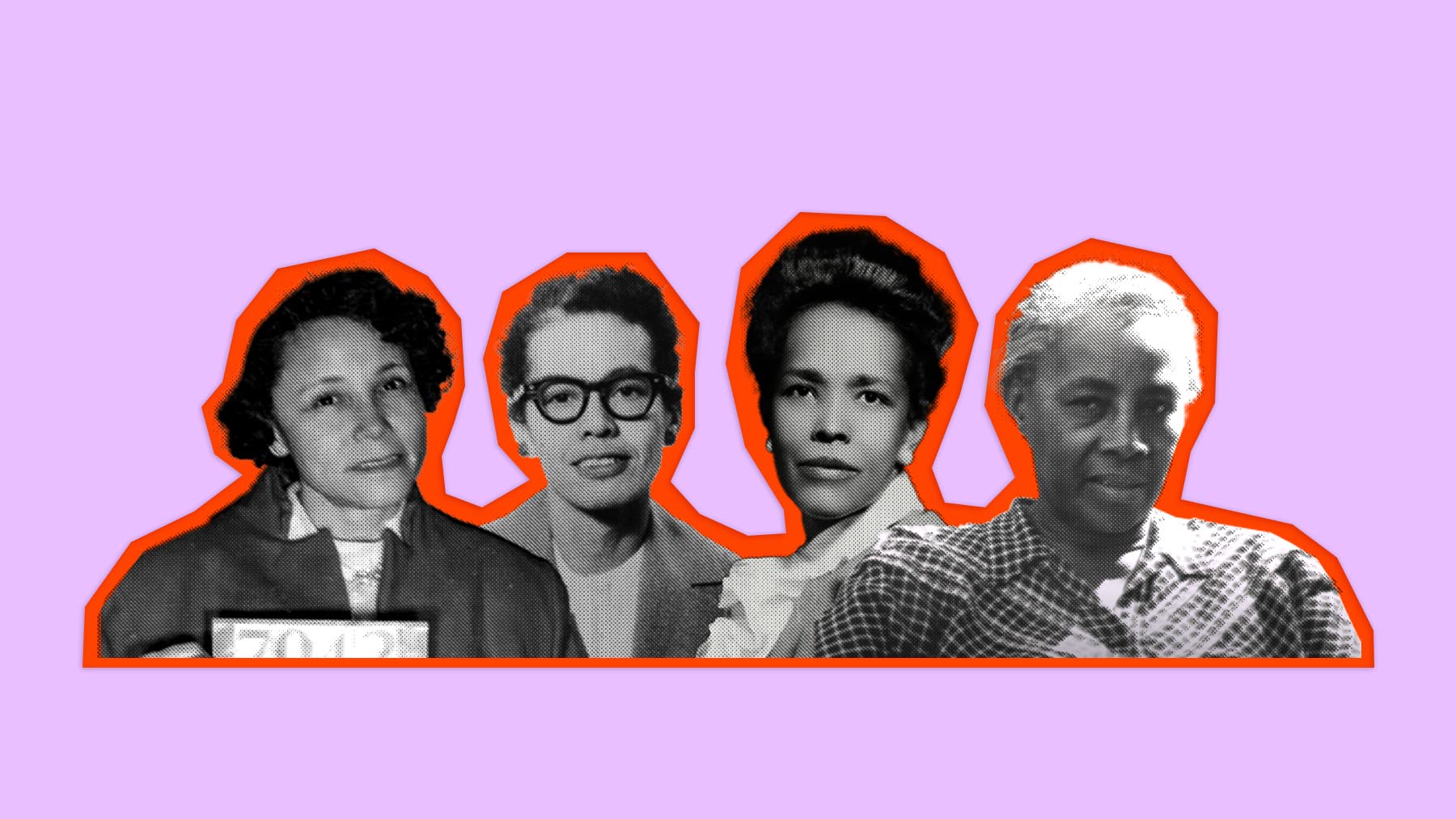Often recognized as the backbone of the Civil Rights Movement, Black women have played an integral role in organizing for justice and democracy. While prevailing gender roles may have prevented some from stepping to the forefront, each of these women were trailblazers who made indelible contributions to furthering human rights and democracy. In honor of Mother’s Day, here’s a look at a few “Mothers of the Movement.”
Fannie Lou Hamer: A fierce civil rights activist and former sharecropper, Hamer committed her life to enfranchising Black voters and building political power through the Mississippi Freedom Democratic Party. She ran for Congress in 1964 and captivated the nation’s attention as she testified before the credentials committee of the Democratic National Convention and spoke of the racist abuse she and other Black people faced for simply trying to register to vote. She also helped organize Freedom Summer.
Ella Baker: Historian Barbara Ransby named Baker as perhaps the “most influential woman in the Civil Rights Movement.” She played a pivotal role as an adviser, leader and community organizer in some of the most influential groups of the time, including the NAACP, the Southern Christian Leadership Conference and the Student Nonviolent Coordinating Committee.
Septima Clark: Nicknamed the “Mother of the Movement” by the Rev. Martin Luther King Jr., Clark dedicated her life to promoting literacy and political empowerment among Black Americans. After 40 years as a teacher, Clark was fired from her job after refusing to withdraw from the NAACP. (Her home state of South Carolina had passed a law barring city and state employees from belonging to civil rights organizations.) She spent her remaining years teaching people basic literacy skills, their rights as U.S. citizens and how to register to vote.
Jo Ann Robinson: A professor at a historically Black college, Robinson played an integral role in the success of the Montgomery Bus Boycott. After Rosa Parks’ arrest in December 1955 for refusing to yield her bus seat to a white rider, Robinson – aided by two students, a college official and her colleagues at the Women’s Political Council – mimeographed and distributed more than 52,000 leaflets calling for Black riders to boycott the city buses.
The Rev. Pauli Murray: Ahead of her time, Murray, as a law student, established the theory that segregation violated the 13th and 14th amendments of the U.S. Constitution. Her work was later used by the legal team that would win the landmark Brown v. Board of Education case in 1954 that ended school segregation. During her life, Murray was an activist, lawyer, poet and Episcopal priest.
Daisy Bates: Bates was co-owner of the Arkansas State Press, one of the few Black newspapers exclusively dedicated to the Civil Rights Movement. When the U.S. Supreme Court struck down school segregation in 1954, Bates began working to enroll Black students at white schools. As president of Arkansas’ NAACP, she selected the students who became known as the “Little Rock Nine” and integrated Arkansas’ Central High School in 1957.
Bree Newsome: After the 2015 murder of nine Black worshippers by a white supremacist gunman at the “Mother Emanuel” AME Church in Charleston, South Carolina, Newsome scaled the 30-foot flagpole at the State House grounds to remove a Confederate flag that had flown there since the 1960s. Although the flag was later raised again, Newsome’s act symbolized the citizen pressure for removal of Confederate iconography. State officials voted to remove the flag two weeks later.
Alicia Garza: A community organizer, activist and writer, Garza helped create one of the most successful social justice campaigns since the Civil Rights Movement of the 1950s and 1960s when she co-founded Black Lives Matter in 2013. The decentralized sociopolitical movement was founded and grew from the deep-seated frustration over police brutality against Black people and the widely publicized killings of Trayvon Martin, Michael Brown and Eric Garner, among others.
Patrisse Cullors: An activist, artist and writer, Cullors co-founded Black Lives Matter as tensions mounted across the nation following the acquittal of an armed civilian who killed 17-year-old Trayvon Martin as he walked home one evening. Cullors is an advocate for prison abolition and LGBTQ+ rights.
Ayo Tometi: Tometi, formerly known as Opal Tometi, is the third co-founder of the social movement and organization Black Lives Matter. A community organizer, writer and strategist, she has been active in social justice movements for more than a decade.
Illustration at top: From left: Jo Ann Robinson, a key player in the Montgomery Bus Boycott; Pauli Murray, whose work was used by the legal team in Brown v. Board of Education; Ella Baker, an adviser and leader of influential civil rights organizations; and Septima Clark, nicknamed the “Mother of the Movement” by the Rev. Martin Luther King Jr. (Credit: SPLC)



